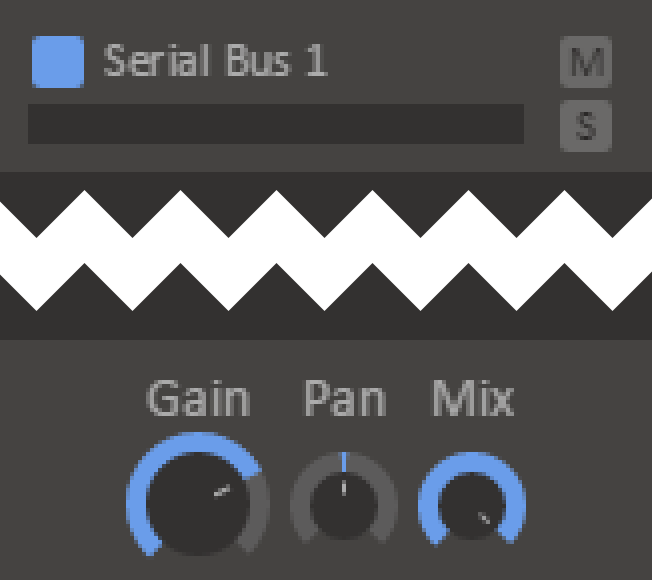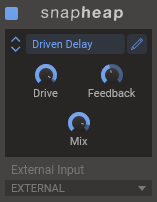Snap Heap
User interface
Signal path
Lanes
Snapin mode
Overview
Snap Heap is a modular effect plugin with many uses. At the heart of the plugin are seven lanes of for combining and modulating effects units known as Snapins. Snapins come in many different flavors, and implements many classic effects like Distortion or Chorus as well as more unusual ones like Formant Filtering and Frequency Shifting. Snap Heap itself can be loaded as a Snapin in any of our host plugins.
In addition to being loaded into Snap Heap, Snapins can also be loaded as plugins directly in your DAW. Snap Heap is bundled with a few different Snapins, and more can be bought from the Kilohearts website.
User interface

This is an overview of the plugin UI. It may look a bit overwhelming at first so let's break it down.
- In the top bar the name, author and description of the current patch is shown. By clicking the 'Browse' button you toggle the preset browser. To the right you will find 'Undo' and 'Redo' buttons, allowing you to undo or redo all actions.
- The eight large knobs under the patch name are known as the macro knobs. These knobs can be routed by the sound designer to any other parameters in the patch in order to provide a few easy-to-reach knobs for tuning the sound of the patch. A single macro knob can even be routed to several parameters.
- The big space below the macros holds the Snapin lanes. Each lane can hold several Snapins. Adding new Snapin is as easy as clicking the empty space at the bottom of a lane.
- Running along the bottom of the UI is the modulation lane. Read more in the modulation chapter.
Signal path
The input audio is passed through all of the enabled effect lanes from left to right. Each lane is processed in sequence, unless the "paralell routing" button is clicked. ![]() When parallel routing is enabled, the two adjacent lanes will be linked together and processed in parallel instead, and the result mixed together before being passed into the next lane. If multiple parallel routing buttons are enabled, all linked lanes will be processed in parallel.
When parallel routing is enabled, the two adjacent lanes will be linked together and processed in parallel instead, and the result mixed together before being passed into the next lane. If multiple parallel routing buttons are enabled, all linked lanes will be processed in parallel.
Lanes
 Lanes are divided into three parts. The header, where you will find a few toggle buttons, the main part of the lane, which holds the Snapins in the lane, and the footer where you will find some mixing controls.
Lanes are divided into three parts. The header, where you will find a few toggle buttons, the main part of the lane, which holds the Snapins in the lane, and the footer where you will find some mixing controls.
In the lane header you will find the following controls:
- Enable button
- This toggle button will turn on or off the whole lane. When the lane is turned off no sound will pass through it at all, and any Snapins sitting in it will have no effect. It is advisable that you turn off all lanes that you are not using, to spare some CPU cycles.
- Mute button
- A toggle switch for muting a lane. Audio will still send audio to the lane, but all effects and lane mixing will be bypassed.
- Solo button
- This toggle button will mute all other lanes. It is useful during sound design if you temporarily want to listen to the audio that passes through just one lane.
In the lane footer you will find some knobs which impact how the output of the lane is mixed down during lane mixing:
- Gain
- Changes the volume of the output of the lane.
- Pan
- Pans the output of the lane left or right.
- Mix
- Adjust the output mix of the lane between completely unprocessed at 0% to fully processed with Snapins at 100%.
Snapin mode
 Snap Heap can also be loaded as a Snapin in Snapin Hosts like Multipass, Phase Plant or itself. In this mode, the Snapin interface shows all named macros that have any modulation bindings. At the top, up/down arrows can be used to scan through presets and a full browser can be opened by clicking the preset name. To edit the current patch, press the pen icon. This will open the full Snap Heap interface in a separate window.
Snap Heap can also be loaded as a Snapin in Snapin Hosts like Multipass, Phase Plant or itself. In this mode, the Snapin interface shows all named macros that have any modulation bindings. At the top, up/down arrows can be used to scan through presets and a full browser can be opened by clicking the preset name. To edit the current patch, press the pen icon. This will open the full Snap Heap interface in a separate window.
The External Input selector allows you to choose which sidechain channel in the Snapin host should be mapped to the external sidechain channel in the contained Snap Heap instance. (See our guide to setting up sidechains in all DAWs here)